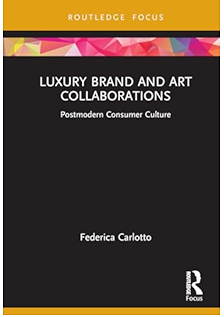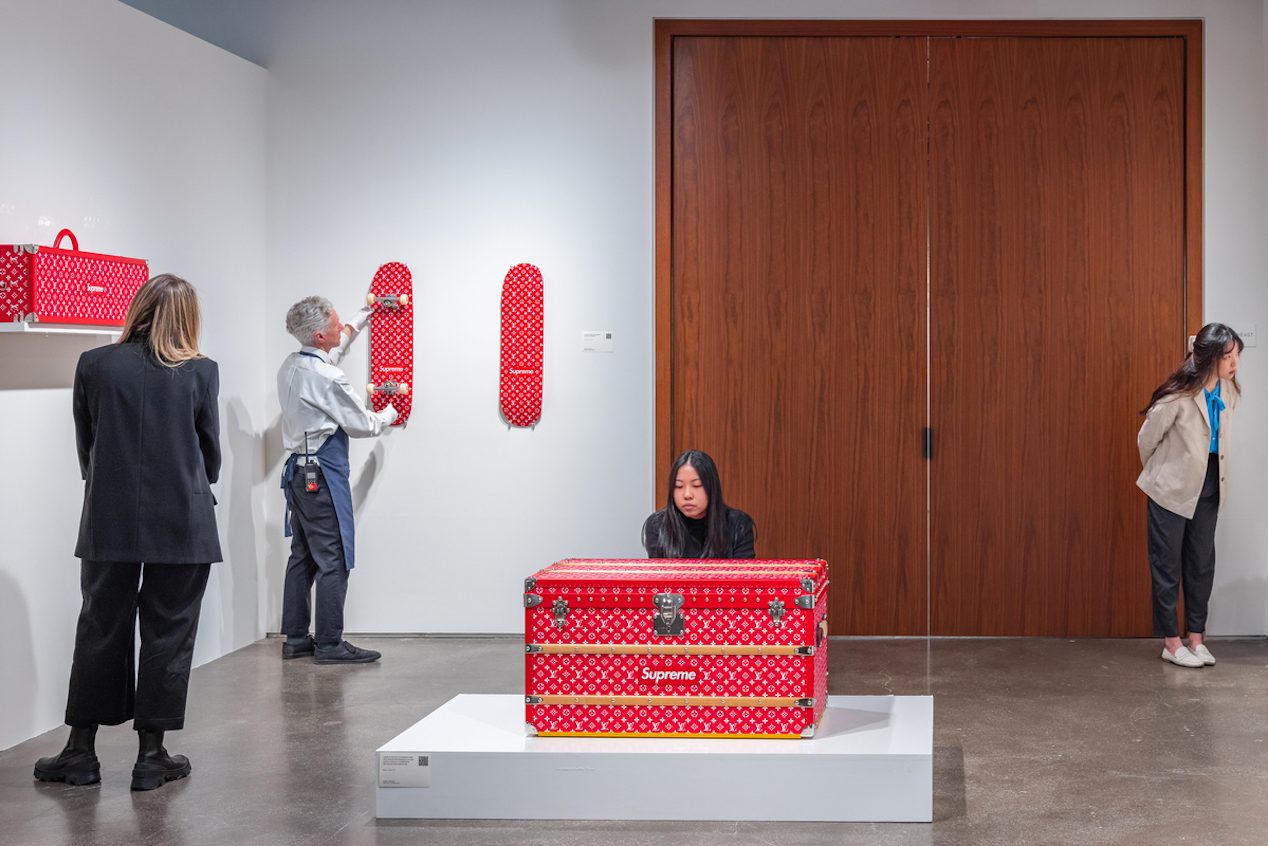Over the past two decades, collaborative initiatives between luxury brands and the art world have been increasing in number and relevance, becoming one of the most engaging ways for luxury brands to connect with their audiences. As Dr. Federica Carlotto is poised to launch her latest book Luxury Brand and Art Collaborations: Postmodern Consumer Culture, delving into this fascinating phenomenon, we discussed the key ideas that informed the publication.
 Your book delves into the increasing collaborations between luxury brands and the art world. What initially sparked your interest in studying this intersection of industries?
Your book delves into the increasing collaborations between luxury brands and the art world. What initially sparked your interest in studying this intersection of industries?
My enquiry goes back to 2018, when I joined Sotheby's Institute of Art to lead its very first academic course about luxury and its synergies with the art world. To design contents and activities that could be appealing to a learning audience mainly interested in the luxury industry, I had to start from very fundamental questions, i.e. what is art and what is luxury, and confront with the common views (and biases) of art and luxury as categories. In my searching journey, I was extremely privileged to count on the Institute's rich network of art experts, faculty and guest speakers as a sounding board for my views and ideas. From those exchanges and the students' feedback throughout the years, my reflections and research shaped up into a body of knowledge, which I then decided to consolidate into a book.
Can you describe your research process for analyzing over 130 collaborative initiatives between luxury brands and the art sector?
I think the most important point for me was to create a specific and original lens through which to interpret luxury brand and art collaborations as a social phenomenon, rather than just as business projects involving specific actors. Classic works on sociology, material culture and consumption - and more recent academic studies - helped me to refine this lens. As for specific examples and cases, throughout my teaching contents and preliminary studies I had collected a few that I knew I wanted to treat more extensively (e.g., Victoria Beckham and Sotheby's, Jeff Koons' Masters collection for Louis Vuitton). There were many initiatives, however, which I encountered while writing, and which played a fundamental role in adding a "tridimensional aspect" to the book. If we consider luxury brands and art collaboration as part of our consumption culture, we cannot consider just the most popular ones in isolation, but we need to see them as part of a collaborative scenario which is far richer and more dynamic.
What has been the most rewarding aspect of writing and publishing this book?
The most rewarding part has definitely been the dialogue with the sources. There was an interesting "back and forth" between the arguments I was building and what facts, data and examples pointed me at: this can get messy and confusing, but it comes a moment when you feel you reach clarity in complexity. That is my "bliss point".
How do luxury brand and art collaborations redefine traditional notions of status and social distinction, particularly in terms of access and experience?
Luxury brand and art collaborations have increasingly promoted "cultural capital" as a status badge for luxury consumers. Whereas in the past the possession or access to luxury goods and experiences was exclusively based on the elites' purchase power, hence conveying their economic/social capital, the collaborations with artists - and more specifically with contemporary artists or unconventional art formats - add a cultural layer to luxury consumption, providing consumers and audiences with a perceived sense of connoisseurship or intellectual "coolness". The implementation of digital art and/or channels of distribution further expands the customer base to crypto-consumers or communities, at the same time building new ways to make access restricted through virtual auctions, digital products' drops, NFTs raffles etc.
How do these kinds of avant-garde collaborations between luxury brands and artists reflect the fragmented aesthetics and hybrid categories you discuss in your book?
Contemporary consumers are exposed to an endless, frantic flow of images, contents, and ideas, both in the physical and in the digital realm. More than the context or the background of these objects of consumption, it is the editing process that make them appealing to our eyes, as exemplified by the Instagram reels or Tik Tok videos. Several collaborative initiatives between art and luxury offer an edited ensemble of sensorial stimulation. Karl Lagerfeld dressing Pharrell as the emperor of Austria in the 2014 video "Reincarnation" about the inspiration of Chanel's jacket, or Nicolas Ghesquière glamourising archaeology through his collaboration with Fornasetti presented among the frises and the ancient sculptures of the Louvre in 2021 turns the historical pastiche into playful aesthetics.
How can businesses leverage the findings from your book to drive innovation and strategic partnerships within the luxury sector?
Understanding the social and cultural underpinnings of luxury brand and art collaborations is indeed pivotal for businesses and players in both sectors to launch initiatives and projects that have deep resonance with their audiences. From this perspective, the book provides a few insights into what that could look like.
Firstly, collaborations are becoming sophisticated and multilayered: it is not anymore about releasing one output targeting a specific audience, but it is about a creative concept that can be articulated throughout different channels and in different formats. Secondly, we see the creation of original formats, from spatial hacking (temporary installation in suggestive places), pop-up store, film festivals etc. Lastly, businesses need to become aware of the evolving role of corporations in the society. Collaborating with art in a consistent or articulated way place companies at the intersection of public and private demanding from companies to consider society at large and plan any philanthropic initiative or art sponsorship accordingly.
Could you elaborate on the curriculum of the MA Luxury Business program, and how students benefit from this specialized focus?
The MA in Luxury Business adopts a rather unique approach as compared to other business programs, starting from the premise that luxury is first and foremost a cultural phenomenon, on which businesses need to build and deliver an economic value. This approach allows students to become very open and receptive to the cultural, societal, and economic shifts of the luxury market and beyond. In a world/industry characterized by daily disruption, the ability to navigate these shifts creatively becomes essential for the success of luxury businesses and is a key requirement for professionals in the luxury sector.

